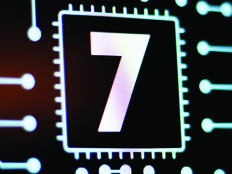While the transition to 5G continues, buzz is building around 6G, which experts say could finally unlock the internet’s almost magical potential.
“5G is trying to enable the Internet of Everything, and it’s making some steps toward that, but 6G will really get it right,” says Jeffrey Andrews, director of 6G@UT, a research center at the University of Texas at Austin that was launched in June 2021.
5G-enabled carrier frequencies above 6 gigahertz will be used for the first time in a cellular system, resulting in much greater bandwidth and data rates than with 4G. 6G will take 5G’s high throughput to a new level by tapping into the terahertz radio-frequency band, according to John Byrne previously a 5G corporate development director at NEC.
“That takes every advantage of 5G and kind of puts it on steroids,” Byrne says. “You’re talking about maybe a thousand times more throughput capacity, whereas with 5G, the holy grail is to be able to get to 1 gigabyte per second on your device.”
Click the link to receive curated content by becoming an Insider.


How Agencies are Using 6G to Maximize IoT
6G could offer enhanced sensing capabilities, facilitating amplified situational awareness for augmented and virtual reality applications to provide potentially jaw-dropping user experiences.
For example, Byrne says, “at the airport right now, I could see someone on a screen telling me about the customs process. With 6G, it could be an actual hologram. For videoconferencing, we could have a simulated conference room where you’re looking at holograms of the people rather than a screen with their faces on it.”
By applying data analytics and artificial intelligence, 6G could make networks smarter and more automated, he says.
“If you take an environment in which you’ve got hundreds of thousands of 6G sensors and you apply data analytics and you have a data pool of all that’s out there, you start talking about some transformative use cases,” Byrne says. “Data from multiple people will start to tell you things in advance.”
315M
The number of Americans covered by 5G since its 2019 launch
Source: ctia.org, “2022 Annual Survey Highlights,” Sept. 13, 2022
A Look Into the Next-Generation Wireless Technology
The towers being used for 5G will likely be repurposed for 6G, but satellites may also play a role.
“You see a lot of these low-Earth-orbit satellites going up right now, which means we are going to have ultimately hundreds, perhaps thousands, out there, which could dramatically change the playing field if they get involved in the 6G story,” Byrne says. “If I ultimately want a drone or service network for my company, a 6G terahertz spectrum and satellite-plus-terrestrial infrastructure is an interesting combination.”
In truth, we’re still a few years away from the arrival of this futuristic new world.
“The general thinking right now is 2030,” Byrne says, noting that delays in setting standards for 5G might set things back somewhat. “It tends to be the same companies and folks that are involved, so everything on 5G impacts the timeline on 6G as well.”
MORE FROM FEDTECH: How alternative storage methods may help reduce data backlogs.
hxyume/Getty Images











